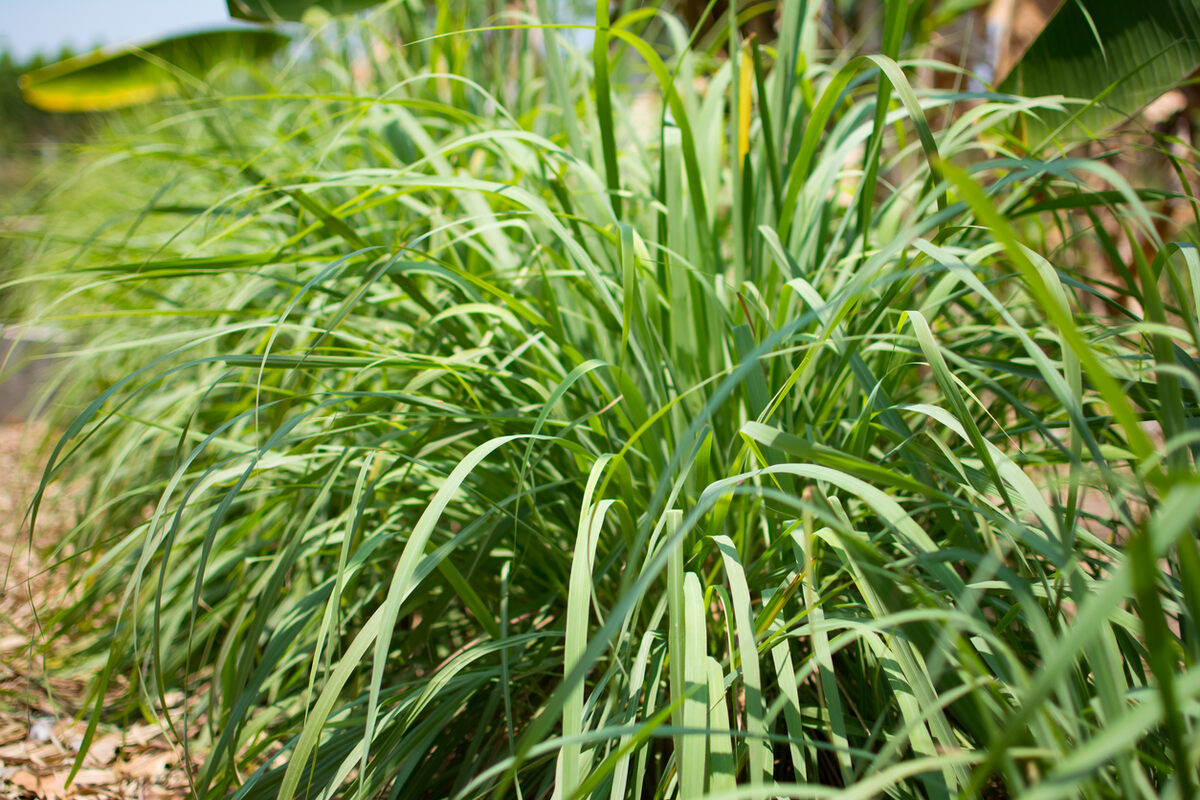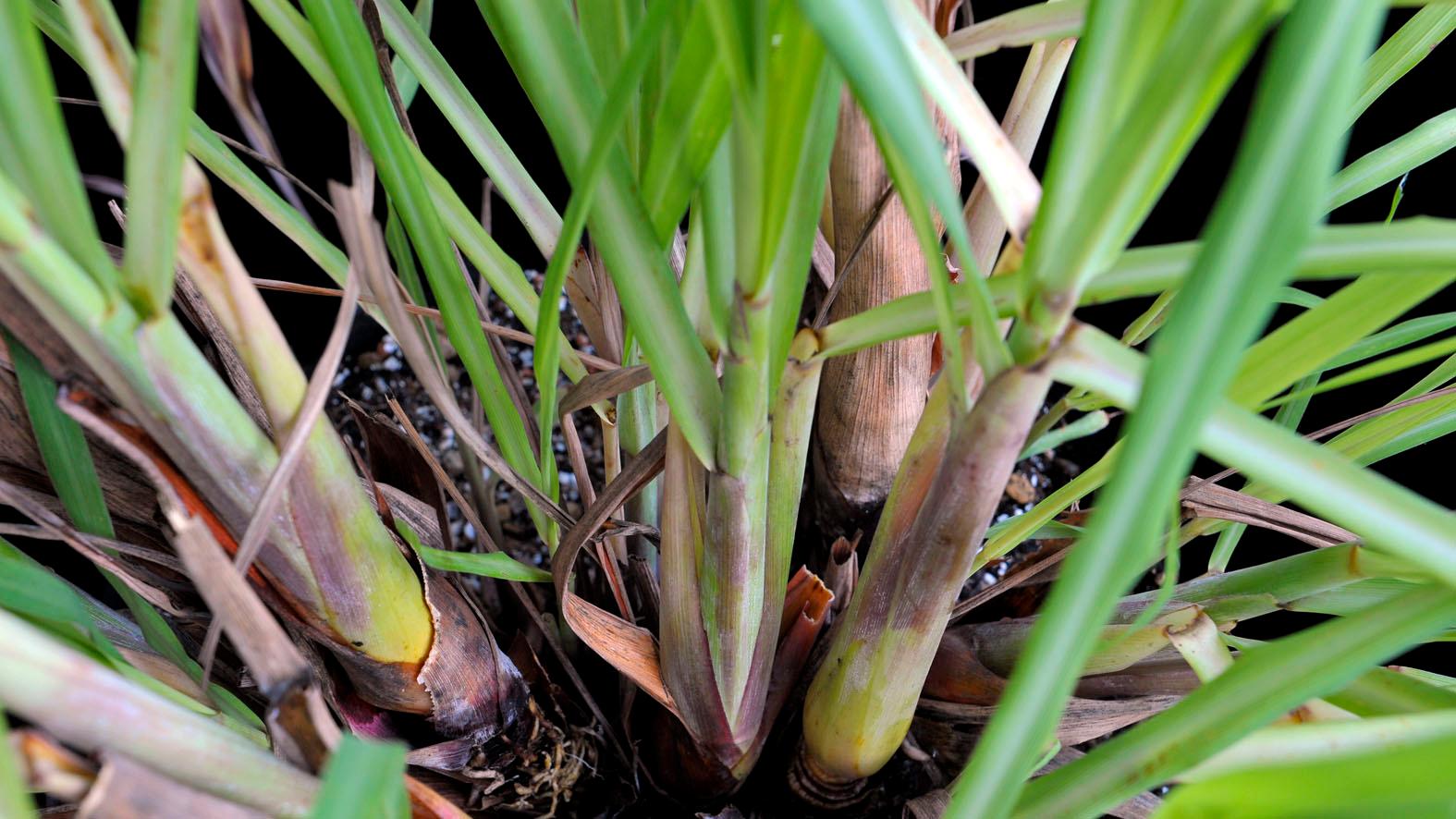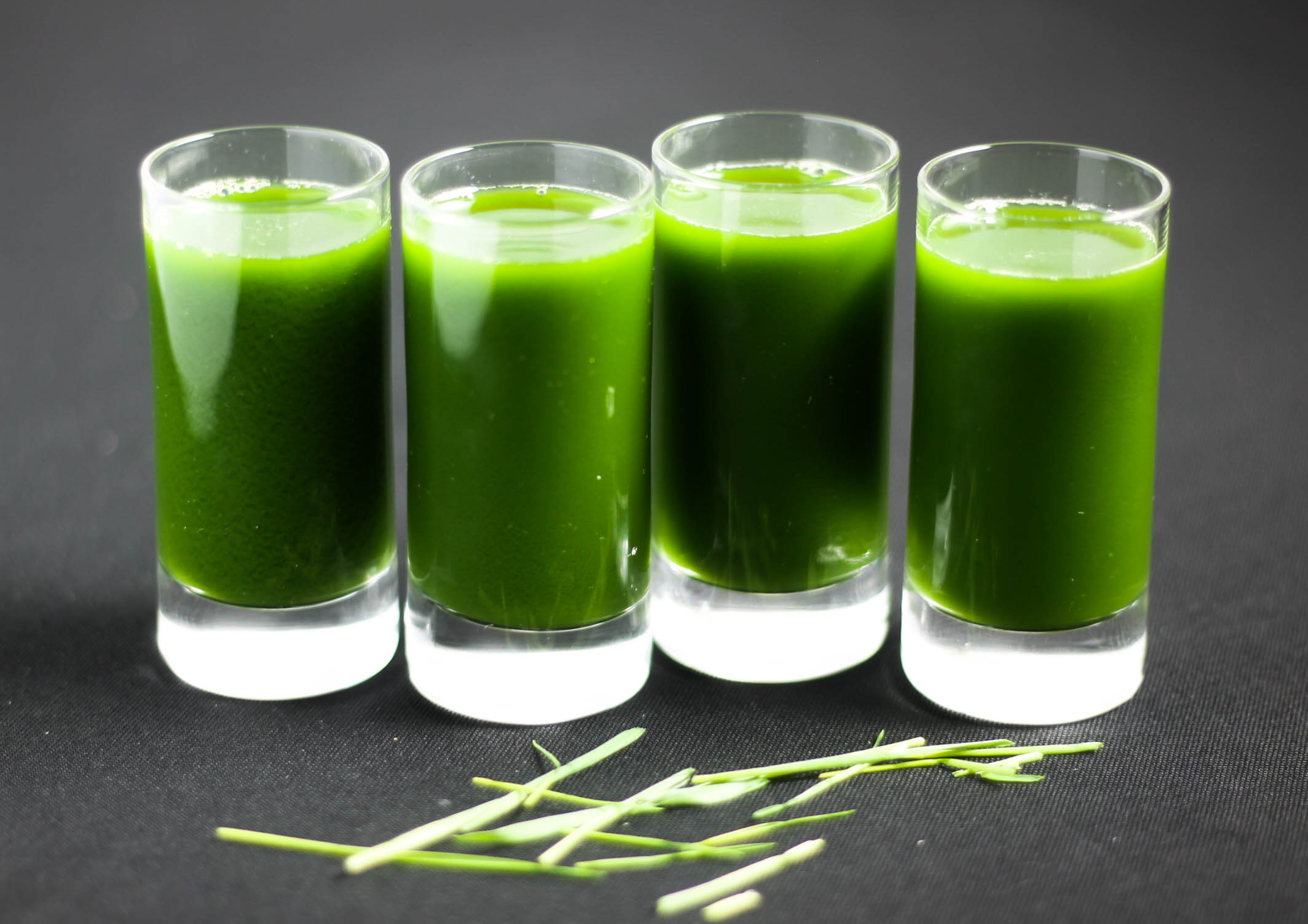Home>Gardening & Outdoor>Landscaping Ideas>What Is Tiger Grass Good For


Landscaping Ideas
What Is Tiger Grass Good For
Published: January 27, 2024
Discover the versatile uses of tiger grass in landscaping ideas. Learn how to incorporate tiger grass for a vibrant and sustainable outdoor space.
(Many of the links in this article redirect to a specific reviewed product. Your purchase of these products through affiliate links helps to generate commission for Storables.com, at no extra cost. Learn more)
Introduction
Welcome to the wonderful world of tiger grass, a remarkable plant with a rich history of traditional and modern applications. Also known as centella asiatica, gotu kola, or Indian pennywort, tiger grass has been revered for centuries for its diverse range of uses, from traditional medicine to skincare. This resilient and versatile plant has garnered significant attention in recent years for its potential health and cosmetic benefits.
In this comprehensive guide, we will delve into the multifaceted nature of tiger grass, exploring its traditional and modern uses, as well as its potential benefits and precautions. Whether you are a nature enthusiast, a skincare aficionado, or someone seeking natural remedies, this article will provide valuable insights into the captivating world of tiger grass.
Join us on a journey through time and science as we uncover the secrets of this extraordinary plant and discover how it can enhance various aspects of our lives. From its historical significance to its contemporary applications, tiger grass continues to captivate the interest of researchers, practitioners, and individuals looking to harness the power of nature for holistic well-being.
Key Takeaways:
- Tiger grass, also known as centella asiatica, has a rich history of traditional uses and modern applications, offering potential benefits for skincare, wellness, and holistic health.
- With its skin-soothing properties and adaptogenic potential, tiger grass is a versatile plant that continues to captivate the interest of researchers and individuals seeking natural remedies and skincare allies.
Read more: What Is Grass Jelly Good For
What Is Tiger Grass?
Tiger grass, scientifically known as centella asiatica, is a perennial herbaceous plant that belongs to the Apiaceae family. This remarkable plant is native to the wetlands of Asia, particularly in countries such as India, China, Indonesia, and Malaysia. It thrives in moist, tropical environments and is characterized by its fan-shaped leaves and small, inconspicuous flowers.
One of the most fascinating aspects of tiger grass is its historical significance and traditional uses. For centuries, various cultures have revered this plant for its purported medicinal properties and therapeutic potential. In traditional Chinese medicine and Ayurveda, tiger grass has been valued for its ability to support overall health and well-being.
From a botanical perspective, tiger grass contains a wealth of bioactive compounds, including triterpenoids, flavonoids, and phenolic acids, which are believed to contribute to its diverse range of potential benefits. In addition to its traditional uses, tiger grass has also gained traction in modern times, particularly in the realms of skincare, herbal medicine, and holistic wellness.
As we continue to unravel the mysteries of tiger grass, it becomes evident that this unassuming plant holds immense promise for both traditional and contemporary applications. Its adaptability, resilience, and rich phytochemical profile make it a subject of ongoing research and exploration, offering a glimpse into the profound wisdom of nature and its capacity to enrich our lives in myriad ways.
Traditional Uses of Tiger Grass
Throughout history, tiger grass has played a prominent role in traditional medicine and cultural practices across Asia. Its esteemed reputation as a medicinal herb has led to a wide array of traditional uses, with diverse cultures harnessing its potential to address various health concerns and promote overall well-being.
In traditional Chinese medicine, tiger grass, known as “luei gong gen,” has been utilized for centuries to support circulation, promote wound healing, and alleviate inflammation. It is often incorporated into herbal formulations aimed at addressing conditions such as skin irritations, eczema, and even digestive disturbances. The herb is believed to possess cooling properties, making it a valuable component in formulations designed to balance heat-related imbalances in the body.
Similarly, in Ayurvedic medicine, tiger grass, referred to as “mandukaparni” or “brahmi,” holds a revered status for its potential to enhance cognitive function, support nervous system health, and promote vitality. It is often used in traditional Ayurvedic preparations aimed at improving mental clarity, memory, and overall cognitive well-being. Additionally, tiger grass is valued for its purported ability to soothe skin irritations and support the body’s natural healing processes.
Furthermore, in Indonesia and Malaysia, tiger grass has been traditionally used as a culinary ingredient and herbal remedy. Its leaves are sometimes incorporated into traditional dishes, while its potential health benefits have been explored in the context of traditional herbal medicine. The plant is also associated with cultural practices and folklore, adding to its significance within local traditions.
These traditional uses of tiger grass underscore its enduring relevance and the profound respect it has garnered across different cultures. The plant’s rich history of traditional applications serves as a testament to its versatility and the wisdom of ancient healing traditions that continue to inspire and inform contemporary approaches to health and wellness.
Modern Uses of Tiger Grass
In recent years, tiger grass has experienced a resurgence in popularity, particularly in the realms of skincare, herbal supplements, and holistic wellness. Its remarkable properties and potential health benefits have captured the attention of researchers, practitioners, and individuals seeking natural alternatives for various concerns.
One of the most prominent modern uses of tiger grass is in skincare formulations. The plant’s extract, often referred to as “centella asiatica extract,” has gained widespread acclaim for its purported skin-soothing and rejuvenating properties. It is commonly featured in skincare products designed to address sensitive, irritated, or aging skin. The extract is believed to support the skin’s natural barrier function, promote hydration, and help alleviate redness and inflammation, making it a sought-after ingredient in the realm of natural skincare.
Beyond skincare, tiger grass has also found its way into the realm of herbal supplements and wellness products. Its potential to support overall well-being, particularly in the context of stress management and cognitive function, has sparked interest in its use as a dietary supplement. From encapsulated formulations to liquid extracts, tiger grass has become a staple in the repertoire of herbal supplements aimed at promoting vitality and mental clarity.
Furthermore, tiger grass has garnered attention for its potential role in holistic wellness practices, including traditional healing modalities such as Ayurveda and traditional Chinese medicine. Its adaptogenic properties, which are believed to help the body adapt to stress and maintain balance, have contributed to its integration into wellness routines aimed at promoting resilience and overall vitality.
As tiger grass continues to make its mark in modern applications, its versatility and potential benefits have positioned it as a valuable ally for those seeking natural solutions for skincare, wellness, and holistic health. The ongoing exploration of its modern uses underscores the enduring relevance of this extraordinary plant and its capacity to enrich diverse aspects of our lives.
Tiger grass, also known as centella asiatica, is good for reducing inflammation, promoting wound healing, and improving skin hydration. Look for skincare products containing tiger grass for these benefits.
Benefits of Tiger Grass
The potential benefits of tiger grass encompass a wide spectrum of applications, reflecting its diverse array of bioactive compounds and traditional uses. From skincare to holistic wellness, this remarkable plant offers a range of potential advantages that have piqued the interest of researchers and individuals alike.
One of the primary benefits associated with tiger grass is its purported skin-soothing and rejuvenating properties. The plant’s extract, rich in triterpenoids and flavonoids, is believed to support the skin’s natural barrier function, helping to maintain hydration and resilience. This makes it a valuable ally for individuals dealing with sensitive, irritated, or aging skin, as it may help alleviate redness, calm inflammation, and promote overall skin health.
Additionally, tiger grass is often lauded for its potential to promote wound healing and tissue repair. Its traditional use in addressing skin irritations and injuries aligns with contemporary research that suggests its role in supporting the body’s natural healing processes. This benefit extends beyond skincare, as tiger grass may offer potential advantages for individuals recovering from minor wounds or seeking to support overall tissue health.
Moreover, tiger grass is associated with potential cognitive and emotional wellness benefits. In traditional Ayurvedic and Chinese medicine, it has been revered for its purported ability to enhance mental clarity, support nervous system function, and promote emotional well-being. This has sparked interest in its modern applications as a potential ally for stress management, cognitive vitality, and overall mental wellness.
Furthermore, tiger grass is often recognized for its adaptogenic properties, which are believed to help the body adapt to stress and maintain equilibrium. This aspect of its potential benefits aligns with its traditional use in promoting vitality and resilience, making it a valuable component of holistic wellness practices aimed at supporting overall well-being.
As ongoing research continues to shed light on the potential benefits of tiger grass, its traditional wisdom and contemporary applications converge to offer a compelling array of potential advantages for skincare, wellness, and holistic health. The multifaceted nature of its benefits underscores the enduring allure of this extraordinary plant and its capacity to enrich diverse facets of our well-being.
Read more: What Grass Is Good For Horses
How to Use Tiger Grass
When it comes to harnessing the potential of tiger grass, there are various methods of incorporating this remarkable plant into your daily routine. From skincare to holistic wellness, the versatility of tiger grass lends itself to diverse applications, allowing individuals to explore its potential benefits in ways that align with their preferences and needs.
Skincare: Tiger grass is commonly featured in skincare products such as serums, creams, and masks, where its extract is utilized for its skin-soothing and rejuvenating properties. When selecting skincare products containing tiger grass, look for formulations designed to address sensitive, irritated, or aging skin. These products can be integrated into your skincare routine, applied as directed to promote skin health and resilience.
Herbal Supplements: Tiger grass is available in various forms, including encapsulated extracts and liquid formulations, making it accessible as a dietary supplement. If you are considering tiger grass as a herbal supplement, consult with a healthcare professional to determine the appropriate dosage and form for your individual needs. When used as a supplement, it may offer potential benefits for cognitive function, stress management, and overall vitality.
Traditional Preparations: For those interested in exploring tiger grass in its traditional context, it can be incorporated into homemade skincare preparations or herbal infusions. The leaves or extracts of tiger grass can be utilized to create topical applications or herbal teas, allowing individuals to experience its potential benefits in a personalized and traditional manner.
Holistic Wellness Practices: Tiger grass can also be integrated into holistic wellness practices such as aromatherapy, meditation, and relaxation rituals. Its adaptogenic properties make it a valuable ally for promoting resilience and emotional well-being. Whether used in essential oil blends or as part of holistic wellness routines, tiger grass offers potential benefits for supporting overall vitality.
As you explore the various ways to incorporate tiger grass into your lifestyle, it is important to prioritize quality and authenticity. When selecting skincare products or herbal supplements, opt for reputable brands that prioritize sustainable sourcing and ethical practices. By doing so, you can ensure that you are experiencing the true potential of tiger grass while supporting responsible and conscientious sourcing practices.
Ultimately, the diverse applications of tiger grass invite individuals to discover its potential benefits in ways that resonate with their unique preferences and wellness goals. Whether as a skincare ally, a holistic wellness companion, or a traditional remedy, tiger grass offers a wealth of opportunities to enrich your daily routine and enhance your well-being.
Potential Side Effects and Precautions
While tiger grass is generally considered safe for topical and oral use, it is important to be mindful of potential side effects and precautions, particularly when incorporating it into your wellness routine. Understanding the potential considerations associated with tiger grass can help you make informed decisions and prioritize your well-being.
Skin Sensitivity: Individuals with known skin sensitivities or allergies should exercise caution when using skincare products containing tiger grass extract. Although tiger grass is revered for its skin-soothing properties, it is essential to perform a patch test before using new skincare products to assess for any adverse reactions.
Herb-Drug Interactions: If you are considering tiger grass as a dietary supplement, it is advisable to consult with a healthcare professional, especially if you are taking prescription medications. Some herbal supplements, including tiger grass, may have the potential to interact with certain medications, necessitating careful evaluation and guidance from a qualified healthcare provider.
Pregnancy and Lactation: Pregnant and lactating individuals should seek guidance from a healthcare professional before using tiger grass, whether in skincare products or as a dietary supplement. While tiger grass has a long history of traditional use, its safety during pregnancy and lactation has not been extensively studied, warranting cautious consideration and expert advice.
Quality and Sourcing: When selecting tiger grass products, prioritize quality and authenticity. Opt for reputable brands that adhere to stringent quality control measures and sustainable sourcing practices. By choosing products from trusted sources, you can minimize the risk of potential contaminants and ensure that you are experiencing the true benefits of tiger grass.
Individual Variability: It is important to recognize that individuals may respond differently to herbal remedies and skincare ingredients. Factors such as skin type, overall health, and individual sensitivities can influence how tiger grass products are tolerated. Pay attention to your body’s responses and discontinue use if you experience any adverse effects.
By being mindful of these potential side effects and precautions, you can approach the incorporation of tiger grass into your wellness routine with confidence and informed awareness. Prioritizing your well-being and seeking guidance when needed can help you derive the potential benefits of tiger grass while minimizing any associated risks.
Conclusion
As we conclude our exploration of tiger grass, it becomes evident that this extraordinary plant holds a wealth of potential benefits and applications that resonate across traditional wisdom and modern wellness practices. From its revered status in traditional medicine to its contemporary role in skincare and holistic wellness, tiger grass continues to captivate the interest of individuals seeking natural solutions for various aspects of their well-being.
The rich history of traditional uses and cultural significance of tiger grass reflects the enduring wisdom of ancient healing traditions, offering a profound testament to the plant’s versatility and potential. Its adaptability and resilience in diverse environments mirror its capacity to adapt to the evolving needs of individuals seeking natural remedies and skincare allies.
Furthermore, the modern resurgence of tiger grass in skincare, herbal supplements, and holistic wellness practices underscores its enduring relevance and the ongoing exploration of its potential benefits. Its skin-soothing properties, potential cognitive wellness benefits, and adaptogenic potential position it as a valuable ally for those navigating the complexities of modern living.
As we embrace the multifaceted nature of tiger grass, it is essential to approach its incorporation into our lives with mindfulness, informed awareness, and a commitment to quality and authenticity. By prioritizing responsible sourcing, seeking expert guidance when needed, and being attentive to individual sensitivities, we can fully experience the potential benefits of tiger grass while safeguarding our well-being.
Ultimately, tiger grass invites us to embrace the wisdom of nature and the profound insights of traditional healing practices, while embracing its potential to enrich our modern wellness journeys. Whether as a skincare ally, a holistic wellness companion, or a traditional remedy, tiger grass stands as a testament to the enduring allure of natural solutions and the timeless wisdom they offer.
As we continue to explore the frontiers of wellness and holistic living, tiger grass remains a captivating symbol of the harmonious relationship between humanity and the healing gifts of the natural world, inspiring us to embrace its potential with reverence, gratitude, and a deep appreciation for the wonders of nature.
Frequently Asked Questions about What Is Tiger Grass Good For
Was this page helpful?
At Storables.com, we guarantee accurate and reliable information. Our content, validated by Expert Board Contributors, is crafted following stringent Editorial Policies. We're committed to providing you with well-researched, expert-backed insights for all your informational needs.















0 thoughts on “What Is Tiger Grass Good For”